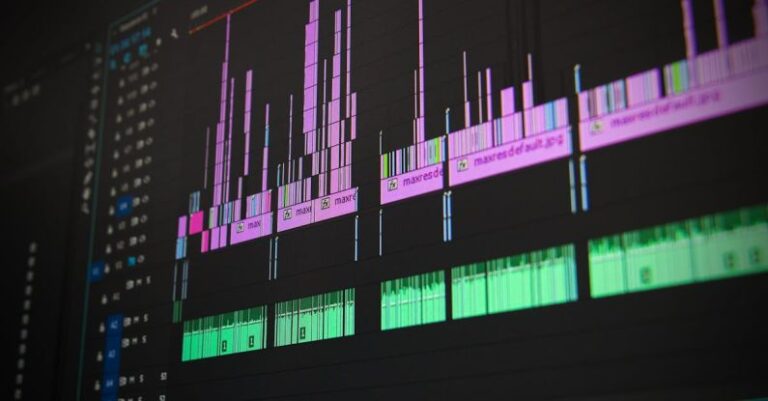What Are the Key Elements of Motion Graphics Design

Motion graphics design is a dynamic and engaging form of visual communication that combines graphic design, animation, and audio to create captivating visuals that convey information in a clear and compelling manner. This article will explore the key elements that make up motion graphics design and the essential principles that designers need to consider when creating motion graphics.
Understanding the Basics of Motion Graphics Design
At its core, motion graphics design is all about using movement to tell a story or convey a message. It is a versatile medium that can be used in a wide range of contexts, from advertising and marketing to film and television. Unlike traditional static graphics, motion graphics add an extra dimension of movement that can enhance the viewer’s experience and make the content more visually engaging.
Color and Typography in Motion Graphics Design
Color and typography play a crucial role in motion graphics design. Colors can evoke emotions, convey meaning, and create visual interest. When choosing colors for a motion graphics project, designers need to consider the overall tone and message they want to convey. Bright, bold colors can grab the viewer’s attention, while muted tones can create a more subtle and sophisticated look.
Typography is another key element of motion graphics design. The choice of fonts, font sizes, and typography styles can greatly impact the readability and visual appeal of the design. Designers need to consider factors such as legibility, hierarchy, and consistency when selecting typography for a motion graphics project. Using a combination of different fonts and text styles can help to create visual contrast and draw the viewer’s eye to important information.
Animation Techniques and Transitions
Animation is the heart of motion graphics design. It brings static elements to life and adds a sense of movement and fluidity to the design. There are various animation techniques that designers can use to create visually appealing motion graphics, such as keyframing, easing, and timing. Keyframing involves setting keyframes at different points in the animation timeline to define the position, scale, rotation, and other properties of an object.
Easing is a technique used to add a sense of realism and natural movement to animations by adjusting the speed of an object as it moves. Timing is crucial in animation to ensure that movements flow smoothly and are synchronized with other elements in the design. Transitions are also important in motion graphics design as they help to create seamless connections between different scenes or elements, making the overall design more cohesive and engaging.
Sound Design and Audio Integration
Sound design and audio integration are essential elements of motion graphics design that can greatly enhance the viewer’s experience. Adding music, sound effects, or voiceovers to a motion graphics project can help to set the mood, create atmosphere, and reinforce the message being conveyed. Designers need to carefully select and integrate audio elements that complement the visual design and enhance the overall impact of the animation.
Interactive Elements and User Engagement
Incorporating interactive elements into motion graphics design can further engage the viewer and create a more immersive experience. Interactive motion graphics allow users to interact with the content, such as clicking on buttons, scrolling through information, or navigating through a virtual environment. Designers need to consider user experience and usability when adding interactive elements to ensure that they are intuitive, responsive, and enhance the overall design.
The Art of Storytelling in Motion Graphics Design
Storytelling is a powerful tool in motion graphics design that can help to capture the viewer’s attention and communicate complex ideas in a simple and engaging way. By structuring the animation around a narrative or storyline, designers can create a cohesive and compelling visual experience that resonates with the audience. Effective storytelling in motion graphics design involves establishing a clear beginning, middle, and end, as well as using visual cues, symbols, and metaphors to convey meaning and evoke emotions.
In Conclusion: Crafting Compelling Motion Graphics Designs
In conclusion, motion graphics design is a multifaceted discipline that combines visual aesthetics, animation techniques, sound design, and storytelling to create engaging and impactful visuals. By paying attention to key elements such as color, typography, animation, sound design, interactive elements, and storytelling, designers can craft compelling motion graphics that effectively communicate messages and captivate audiences. Embracing creativity, experimentation, and innovation is essential in pushing the boundaries of motion graphics design and creating memorable visual experiences.





